Castlevania Season 2 Easter Eggs and Reference Guide
Castlevania season 2 has quite a few references to the seminal video game series. Here's what we've found so far...
This Castlevania article contains spoilers.
Castlevania season 2 continues the story of Trevor Belmont, Alucard, and Sypha Belnades as they make their way to Dracula’s castle for a final confrontation with the Count. The second season also introduces quite a few new characters, including three big names from the video game series. You may also spot some familiar monsters and ghouls!
As we did with Castlevania season 1, Den of Geek has put together a list of easter eggs and references found in the second season of the animated series. We’ll be covering all of the new things appearing in season 2, but won’t be going over Trevor, Sypha, and Alucard again since we already covered them in the first season reference guide along with much of the other basic Castlevania knowledge.
This is still a work-in-progress, which means that you’re welcome to call out easter eggs and references that we might have missed. Just hit me up on Twitter or in the comments below.
Here’s everything we’ve found so far:
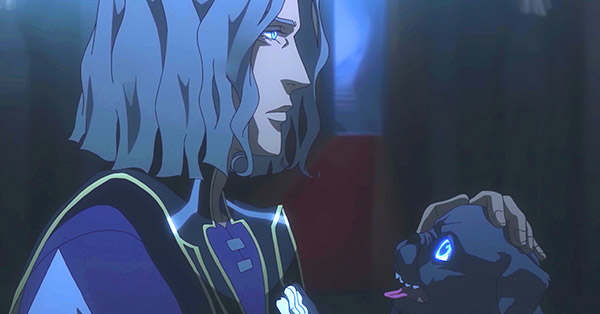
Hector
Hector’s tragic past leads him into the service of Dracula as a Devil Forgemaster (more on this in a minute). While loyal to the Count at first, he later sides with Carmilla to dethrone the clearly broken Lord of Vampires. At the end of season 2, he is taken prisoner by Carmilla, who plans to use him to rebuild her evil army.
The character was first introduced as one of the two protagonists in Castlevania: Curse of Darkness. While his backstory isn’t as fleshed out in the game series as it is on the show, Hector is said to have served Dracula during his reign of terror in Wallachia but later betrayed his master because he disagreed with his cruel methods.
Giving up his powers, Hector decided to live a normal life, falling in love with a Church healer named Rosaly. His past soon caught up with him when a man from his past, Isaac, caused Rosaly to be burned at the stake as a witch. In Curse of Darkness, Hector traveled to an abandoned castle, seeking vengeance. Along the way, he teamed up with none other than Trevor Belmont.
It remains to be seen if we’ll get to see all this go down in a later season of the Netflix series.
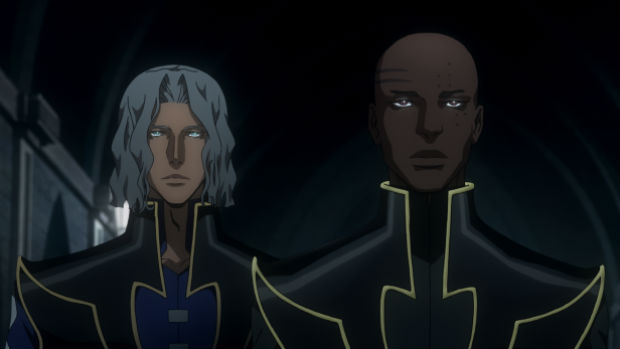
Isaac
Isaac, Dracula’s other Devil Forgemaster and one of the generals in charge of waging war on Wallachia, is willing to die for his master but is saved by the Count before Trevor, Sypha, and Alucard arrive. The final episode of season 2 hints that Isaac plans to build his own army and get avenge his master’s demise. We’ll see about that.
Castlevania: Curse of Darkness also depicts Isaac as one of Dracula’s loyal followers. After Hector betrays his master during the events of Castlevania III: Dracula’s Curse, Isaac vows to punish the traitor. The villain later manipulates Hector into bringing back Dracula’s castle before finally facing his demise.
As you’ll undoubtedly notice, the TV series went with a different design for Isaac. In the games, Isaac looks like he adopted his style from punk rock and mixed it with some BDSM leather.
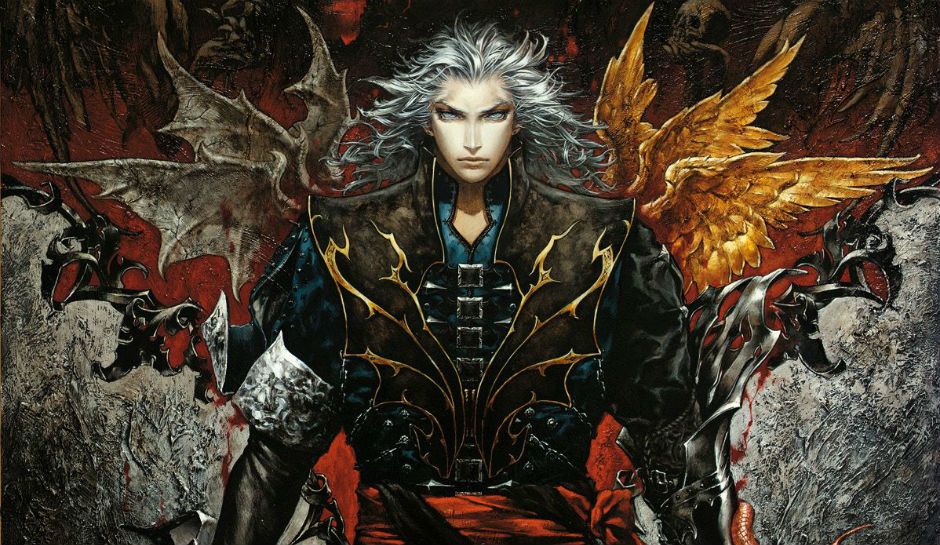
Devil Forgemaster
The concept of Devil Forgemasters was first introduced in Castlevania: Curse of Darkness. These human sorcerers can create the evil creatures needed to build massive armies. Forgemasters are indispensable in Dracula’s campaign to terrorize Wallachia. While we mostly see Hector and Isaac acting as necromancers for Dracula, bringing back the dead and turning them into monsters, Forgemasters can also summon demons and other creatures from beyond.
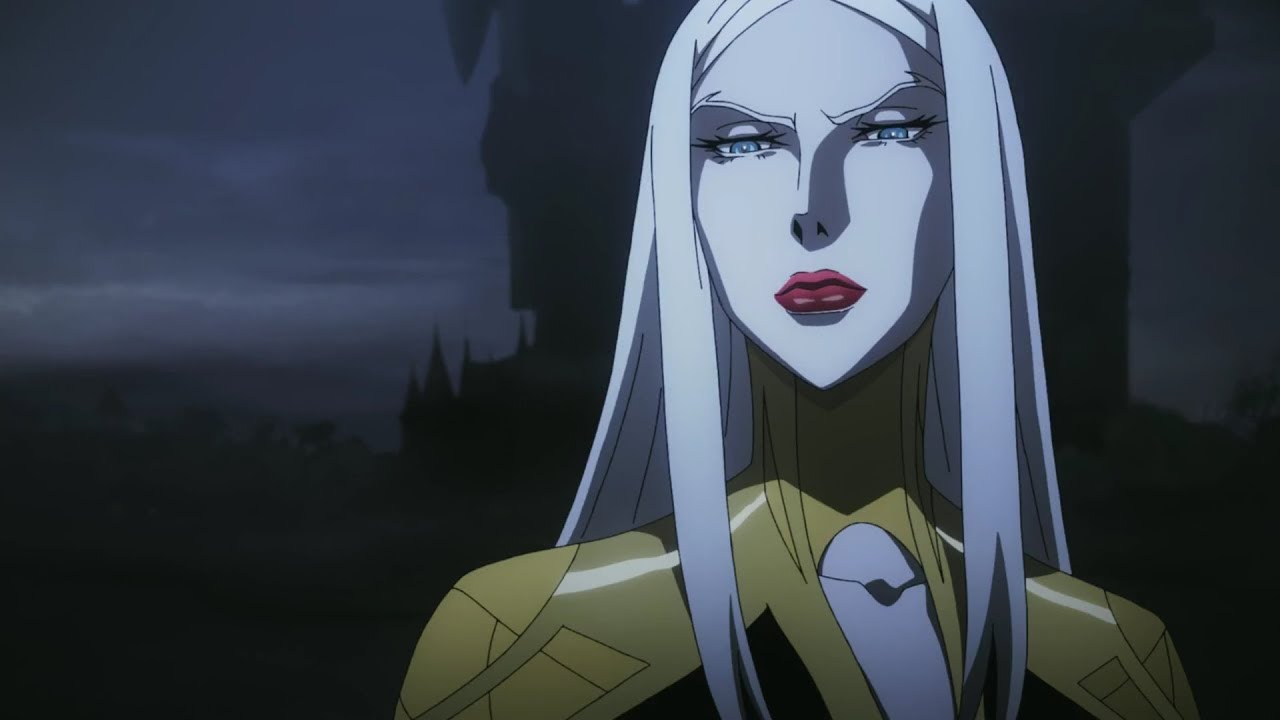
Carmilla
The villainess Carmilla is actually inspired by an 1871 vampire novella of the same name by Joseph Sheridan Le Fanu that predates Bram Stoker’s Dracula by 26 years. Carmilla tells the story of a woman who is being stalked by a female vampire. The novella’s antagonist was pretty risqué for her time due to her sexual attraction to her female prey, serving as a prototype for later lesbian vampire tales as well as a big inspiration of Stoker’s novel.
Castlevania‘s version of Carmilla, who is actually portrayed as the same character from the original novella, first appeared in Castlevania II: Simon’s Quest as a boss. As on the show, Carmilla serves Dracula and is a symbol of sexuality in the games. She is depicted as a naked woman behind a mask or riding a large skull. Carmilla has been called “Camilla” in some installments and has also been referred to as “Vampira,” which could be a reference to the spooky television host from the 1950s.
Unlike the animated series, Carmilla is a loyal follower of the Count who doesn’t seek to supplant him.
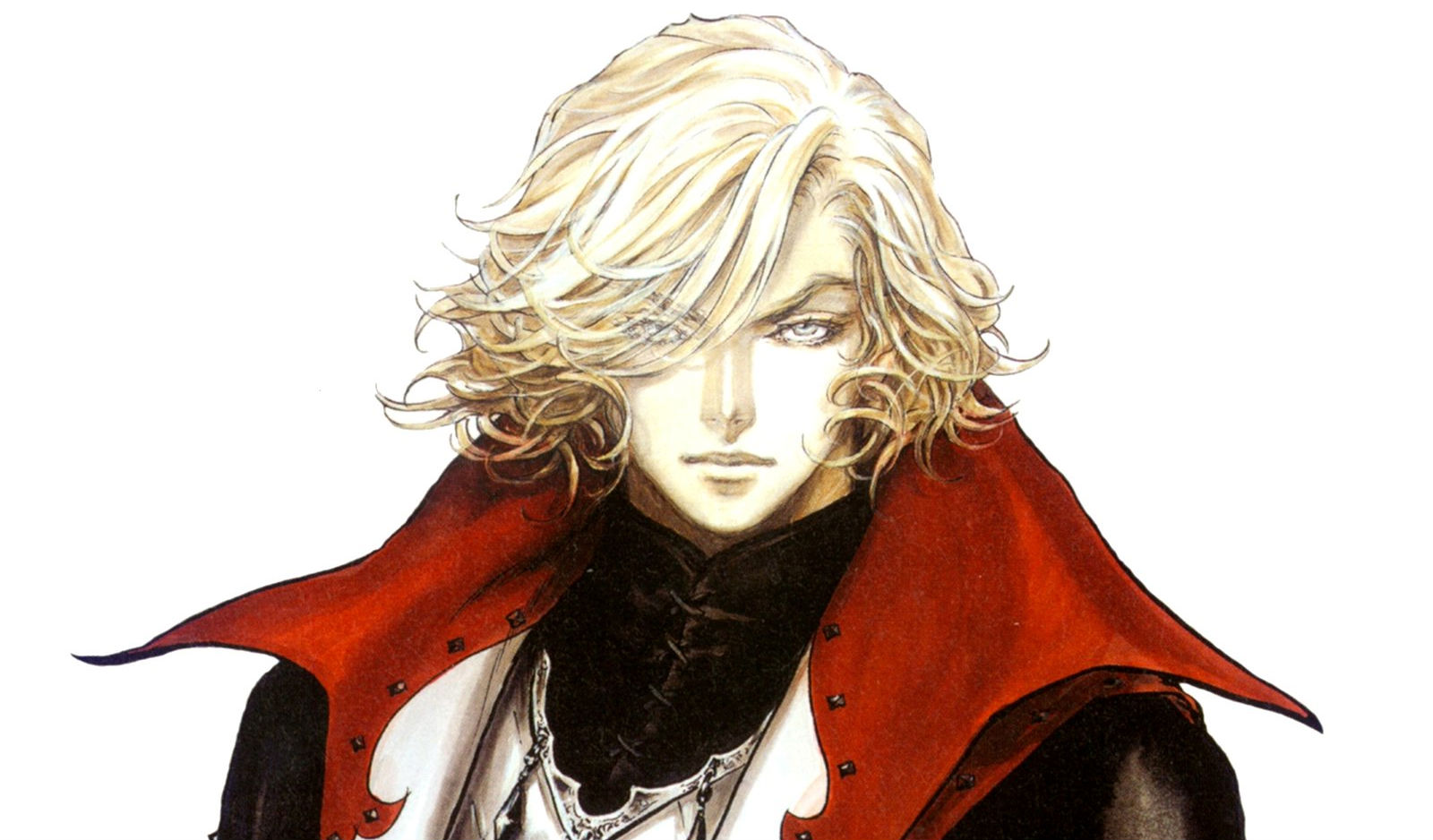
Leon Belmont
Leon Belmont is not only the protagonist of Castlevania: Lament of Innocence, he’s the original vampire hunter and founder of the Belmont Clan. While he’s not the first Belmont hero in terms of series chronology (that honor goes to Simon Belmont), Leon’s fight against the creatures of the night predates Simon’s adventures by almost four centuries.
A skilled knight by the age of 16, Leon faced his first vampire after his beloved Sara was kidnapped by the evil Walter Bernhard. He was also a good friend of Mathias Cronqvist, the man who would become the dreaded Dracula after the death of his wife, Elisabetha. Fueled by rage, Mathias sought vengeance against God for the death of Elisabetha and turned into a vampire, betraying Leon in the process and igniting the centuries-old war between the Belmonts and the Count.
We’re not going to get into all this but Castlevania: Lords of Shadow, a reboot of the series, would later retcon all this with a new character named Gabriel Belmont, who was then transformed into Dracula at the end of the game. You pretty much get to choose which canon you want to follow in this case…
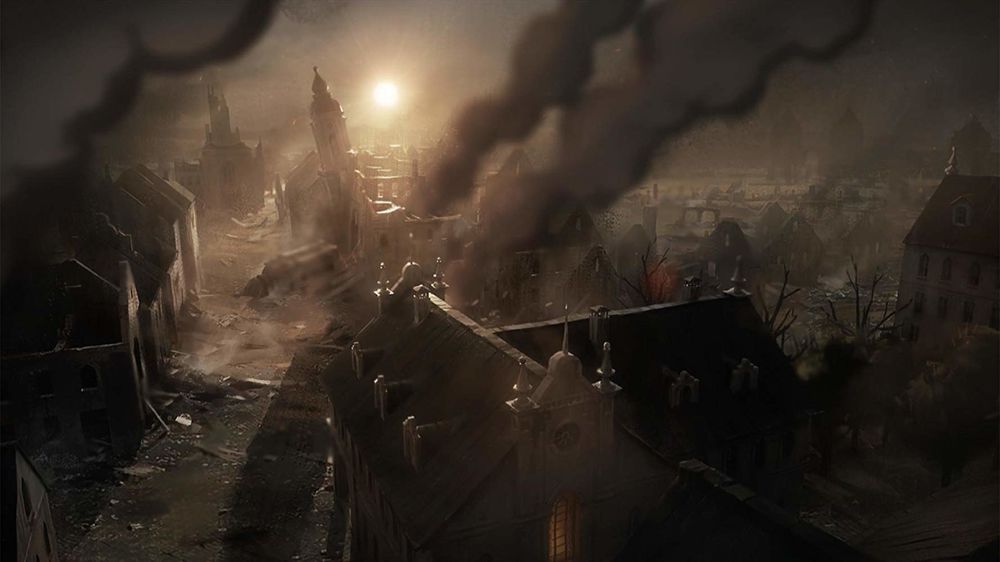
Braila
Braila, the site of season 2’s big battle and the subject of much of the vampire debate inside Dracula’s castle, is a real port city in Romania, located on the Danube, Europe’s second longest river.
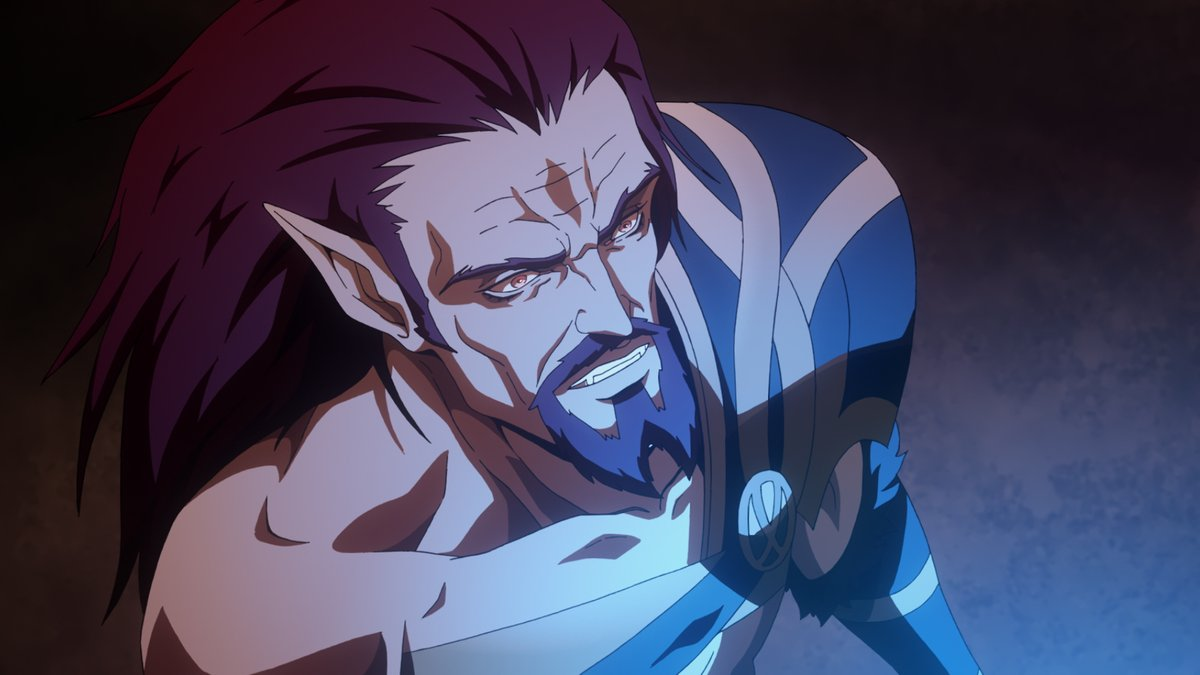
Godbrand’s Voice
While Godbrand hasn’t appeared in the video game series, there is something notable about his voice. This comedic relief character is voiced by Swedish actor Peter Stormare (Fargo, The Big Lebowski, Armageddon), who is known for playing characters with different European accents. If you were wondering why Godbrand’s voice is so…unique, well it seems that Stormare was just trying to do his best Romanian accent.
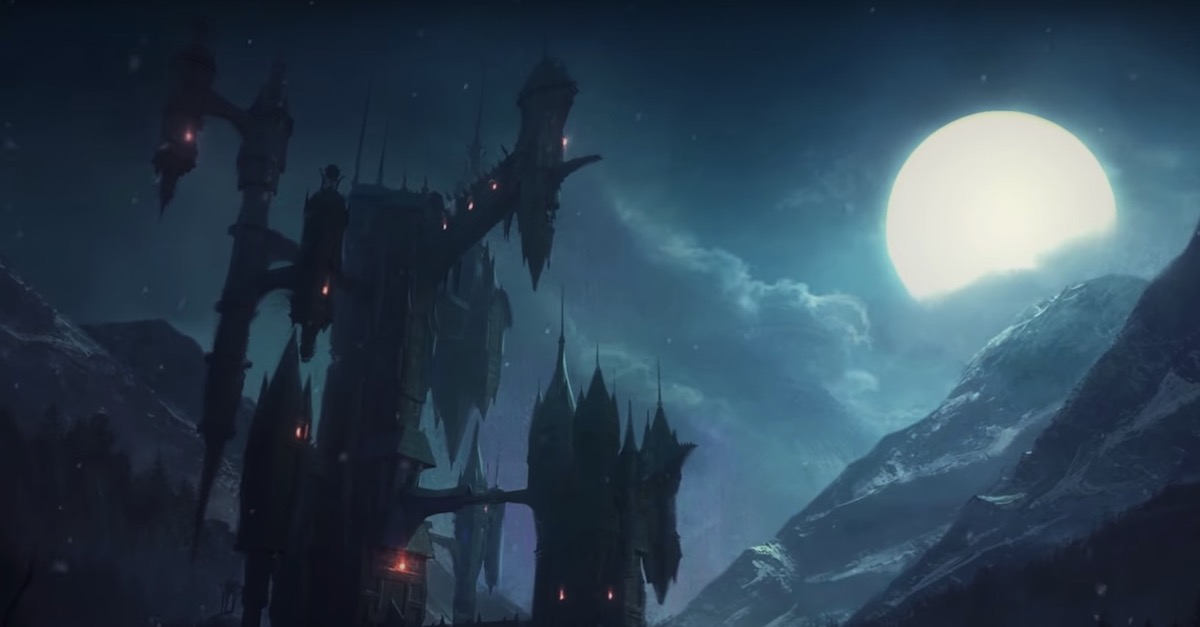
Dracula’s Moving Castle
Also known as the Demon Castle or Castlevania (if you’re wondering where the name of the series comes from), Dracula’s castle is the main setting of several of the games in the series. While it’s actually a castle in the Netflix series (as far as we can tell), the castle is actually a gateway into a dimension of monsters in the games, which explains why it’s so massive on the inside.
The castle also moves and has appeared in different parts of the world throughout history, although usually in poor Transylvania. The reappearance of the castle usually means that Dracula is back and up to no good.
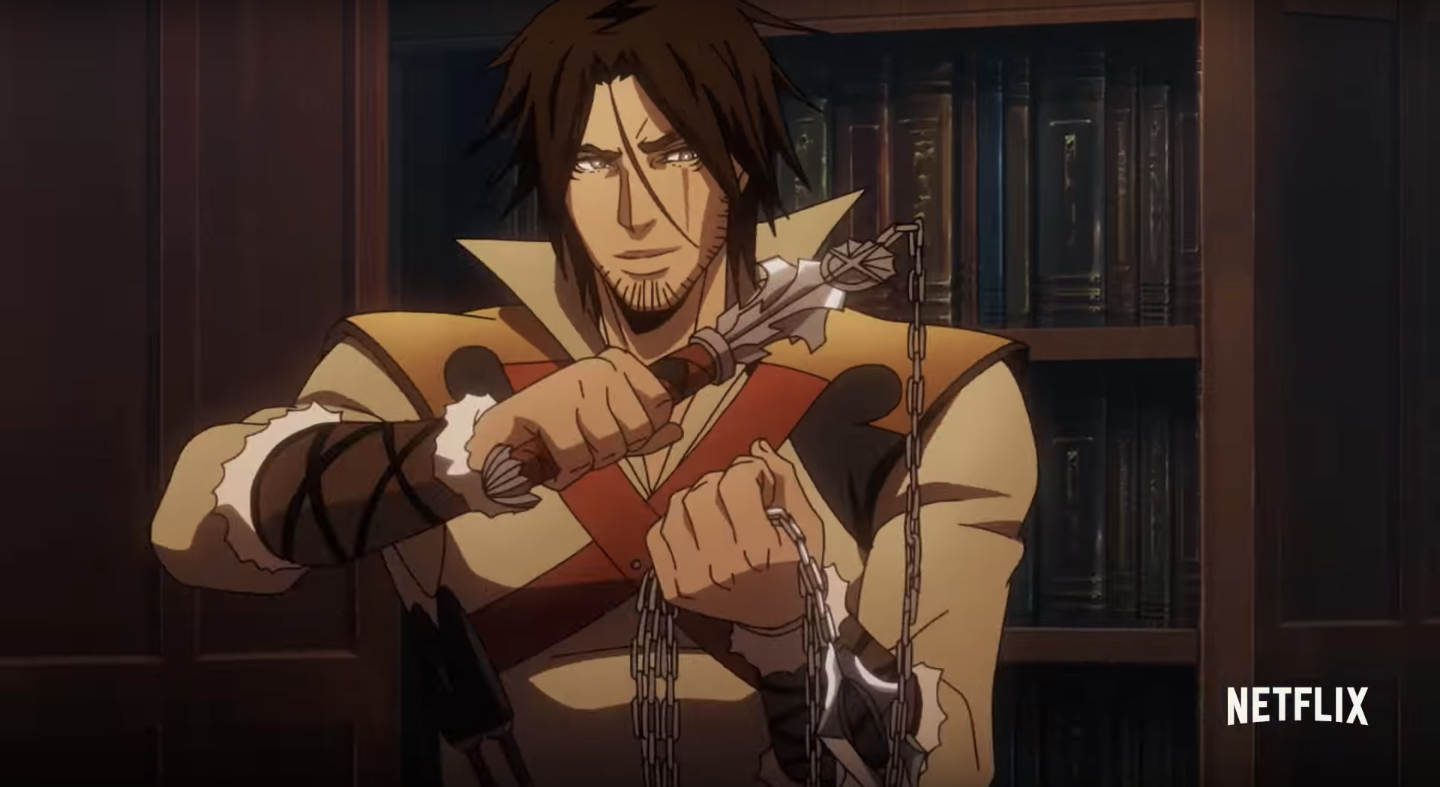
Morning Star
Trevor is surprised to find Morning Star in the Belmont Hold. While it’s depicted as a completely different whip to Trevor’s Vampire Killer, Morning Star is actually an upgrade in the games. Morning Star is the highest upgrade you can get for your Vampire Killer whip. The upgrade is usually depicted as a chain whip but has also appeared as a spiked club.
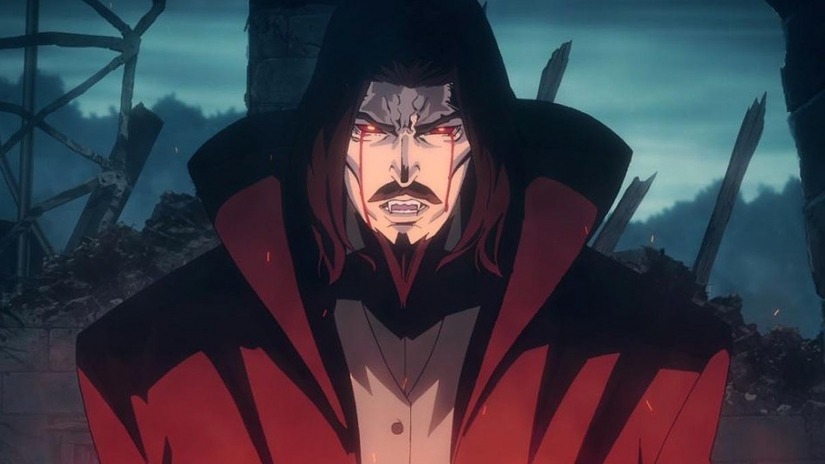
Emo Dracula
While this isn’t technically an easter egg or reference, there might be an explanation for why Dracula spent so much time in his study and away from the action in season 2. Like his video game counterpart, the Dracula of the show waits in his chambers most of the season because he’s the final boss and only steps out of the shadows to fight the heroes in the climactic seventh episode.
The series makes a commendable effort to show what Dracula is up to in his quarters while the heroes fight their way to him. Unfortunately, watching Dracula sulk for the better part of eight episodes isn’t exactly riveting television. Still, if paying homage to Dracula’s usual role in the games is what the showrunners intended, then it’s kind of brilliant.
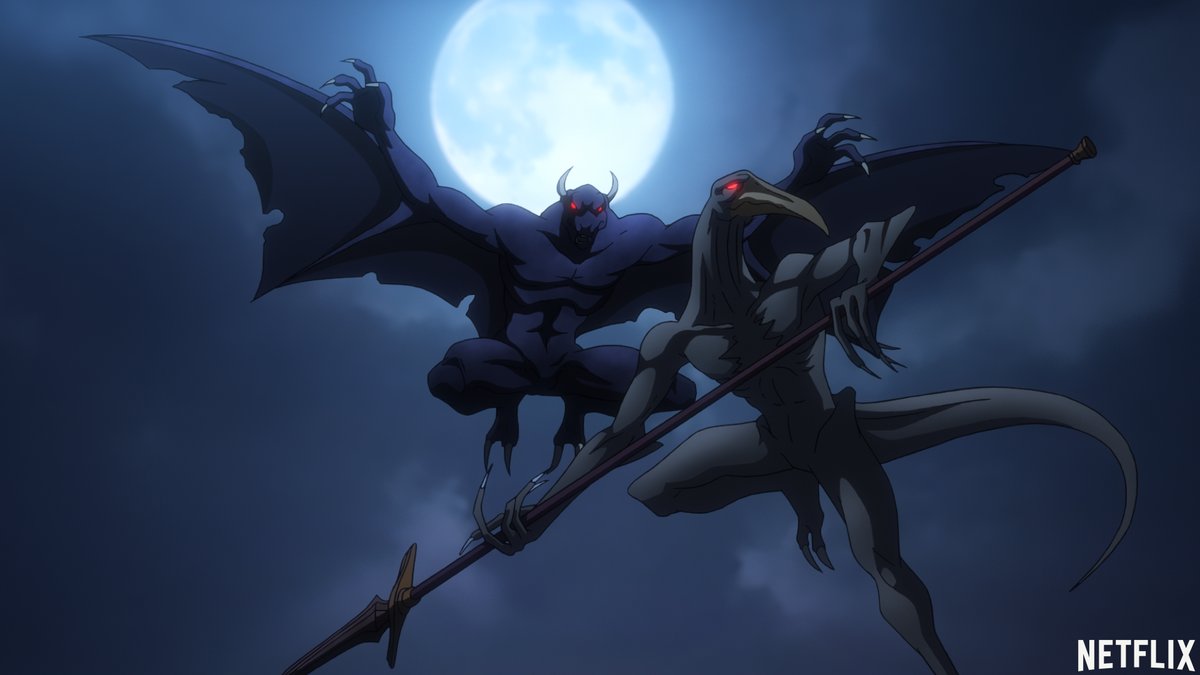
Slogra & Gaibon
If you’re a big Castlevania fan, you undoubtedly noticed two very familiar monsters in season 2: the Slogra and the Gaibon. These enemies were first introduced as the two bosses Simon Belmont must defeat before confronting Dracula in Super Castlevania IV. Slogra is a knight armed with a spear while Gaibon is a fire-breathing demon. Both of these creatures serve Death itself.
These villains would later return in Symphony of the Night, first as individual bosses and then as a team. Since then, Slogra and Gaibon have usually teamed up against the player in other entries. That’s why they fight Trevor, Sypha, and Alucard as a team on the show.
